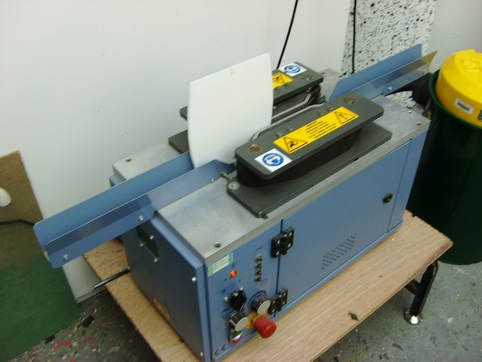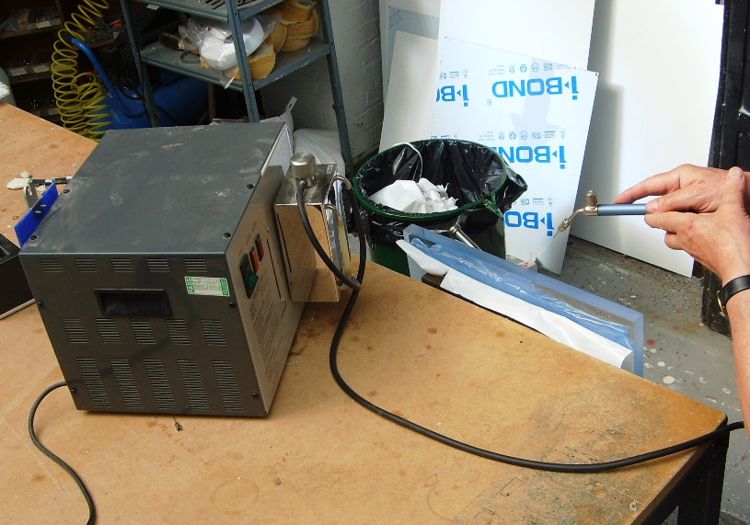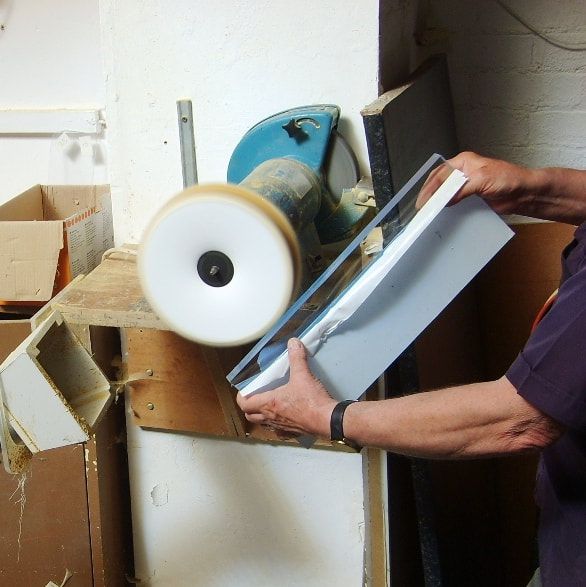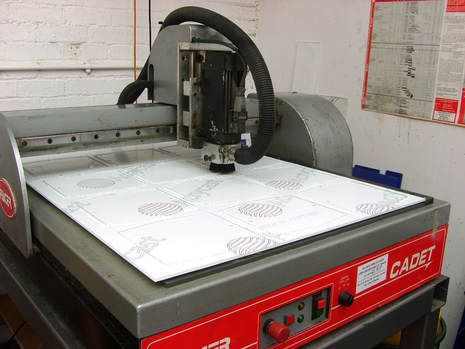Polishing and Acrylic Fabrication
Diamond Edge Polisher

Flame Polisher

Buff Polisher

CNC Router - Pacer Cadet

Bob Emmett of SignFab Ltd spoke to Martin Hinchliffe about Acrylic Fabrication, and everything from his CNC Router, polishing acrylic panels to Chloroform.
Bob: I've got a CNC router. It's only a small one, but it does me. You know, I’ve had it now for about nine years. It’s a 1,200 by 690mm Pacer.
Martin: Do you ever need anything bigger than that?
Bob: If I do, I do it by hand. That’s what I used to do before I had the CNC Router. I don’t do it often, which is why I promote doing the Perspex letters up to 600mm.
Martin: Let’s talk about the polishing of the clear-cut acrylic panels, which is a core part of your business:
Bob: I’ve got 3 polishers, a flame polisher, a diamond edge polisher and a buff polisher, so I can do any size of acrylic.
I’ve got a line bender too, which I use for point of sale work. I can also use this for building boxes, I do clear neon boxes, although they’ve gone out of fashion to a certain extent.
Martin: What are the limitations of a flame polisher?
Bob: I do have to scrape the edges though to prepare it for a flame polisher or a buffer, but with Diamond edge polishers, it doesn’t need that extra step.
Flame polishing is fine for clear and tinted acrylic, but it dulls the edge of coloured acrylic; it’s to do with the pigment.
Martin: What are the limitations of the diamond edge polisher?:
Bob: There are bigger ones out there, but mine allows me to do a metre by a metre. I would use this for all straight panels. It cuts off about half a mm from the edge. When the diamond edge cutter gets worn, the edges start to dull, but I can polish it on the buffing wheel afterwards for a really superb finish. To replace the cutting tool on the diamond edge polisher costs about £1,000 for a new one, but I normally get a reconditioned one. The machine itself cost me £4,500 about 9 years ago second hand.
Martin: What’s the main part of your business?
Bob: Cut and polished acrylic panels has become a core part just recently. People are getting the clear panels, and printing on the back, then putting supports on it to fit it to the wall. I don’t get involved in the printing and I just supply the cut and polished acrylic to the trade. Right now I’m doing quite a few sneeze screens due to the pandemic. I also do boxes for exhibitions.
Martin: How did you get into this?
Bob: I originally started out doing built up letters, but the glues that I used got to my chest, so I decided to pack it in. You build up the letters, then glue inside to seal them, the solvents just linger in the workshop and it’s carcinogenic. I still use it myself to stick locators to the back of letters, I open all the doors and just go for a walk or something straight after.
When I build up clear boxes for neon or exhibitions, I use chloroform instead which I get from a hospital supplier, which fuses the Perspex together. It’s strong, and if you hit it with a hammer it’s likely to break the Perspex sheet before breaking the joint.
Martin: Does it have the same effect as the solvent glues?
Bob: Yes, but it looks nicer, because it flows inside it. I run it in with a needle, it floods inside and you don’t see the glue.
Martin: What other materials do you work with?
Bob: Aluminium composite and foamex
Martin: Have you ever done built-up metal letters?
Bob: No. If I get metal in the workshop then there’s the chance the metal filings or whatever will come into contact with the acrylic and scratch it, and you can’t get the scratches out. When I supply to people it has to be scratch free.
